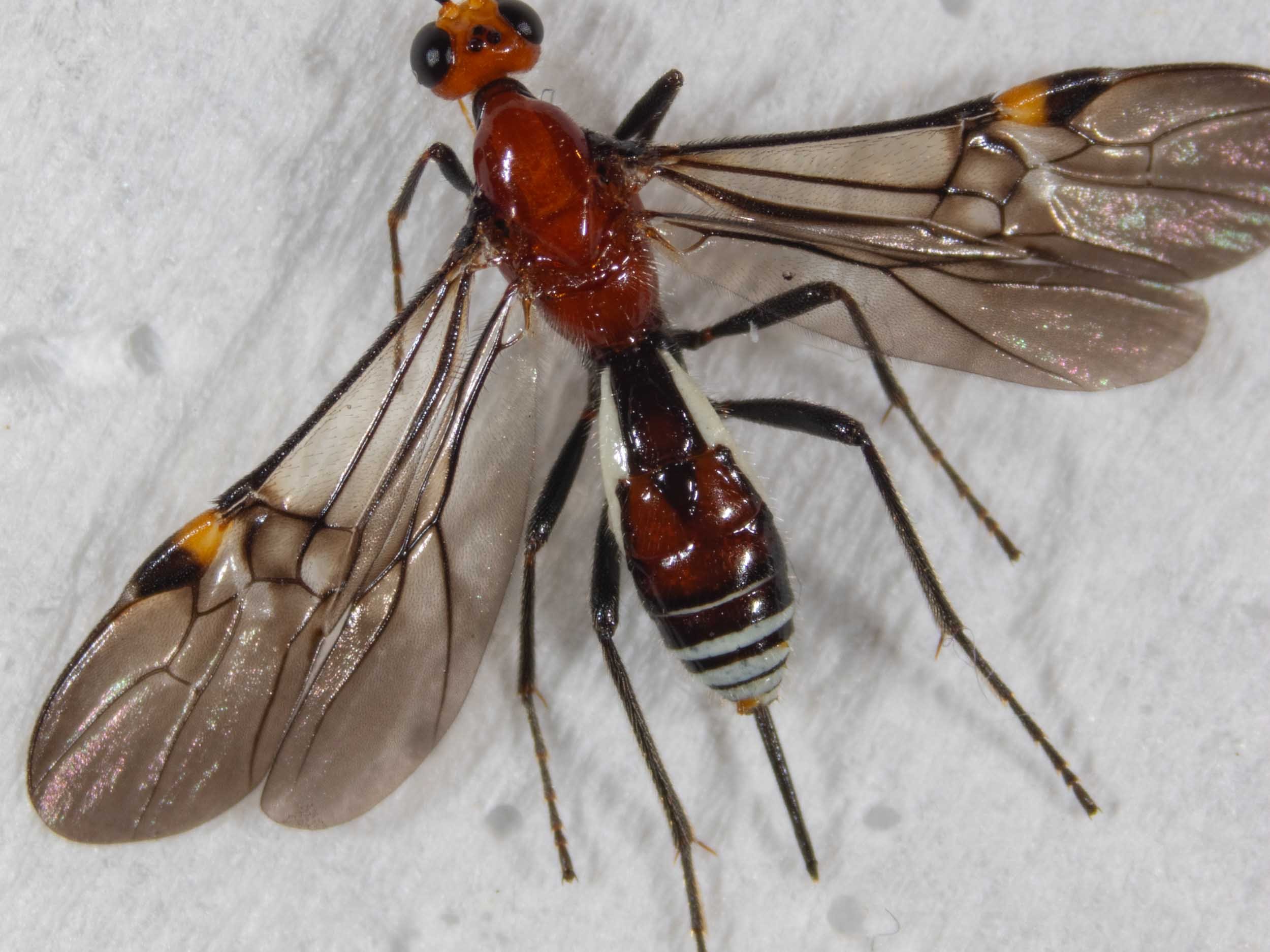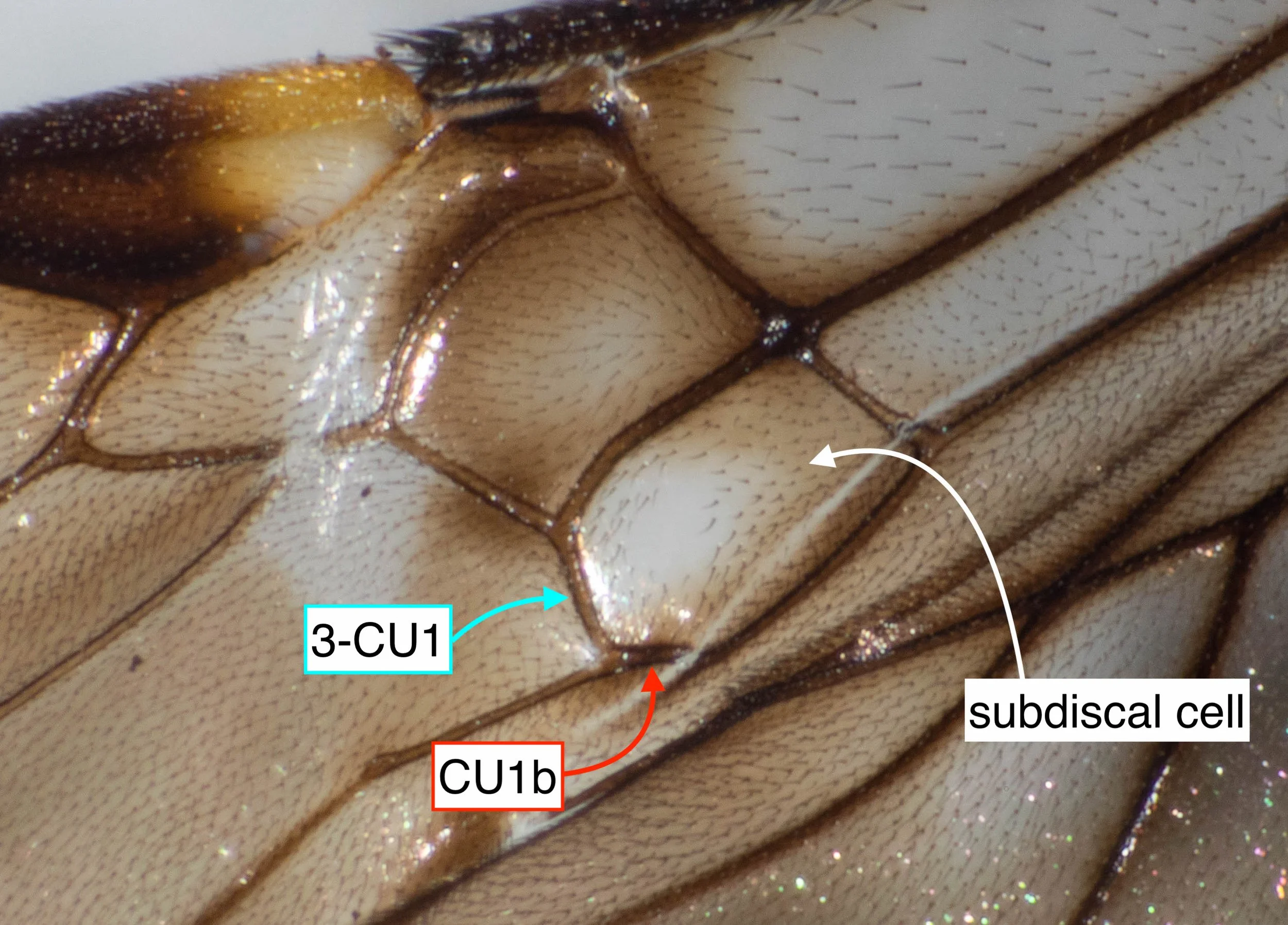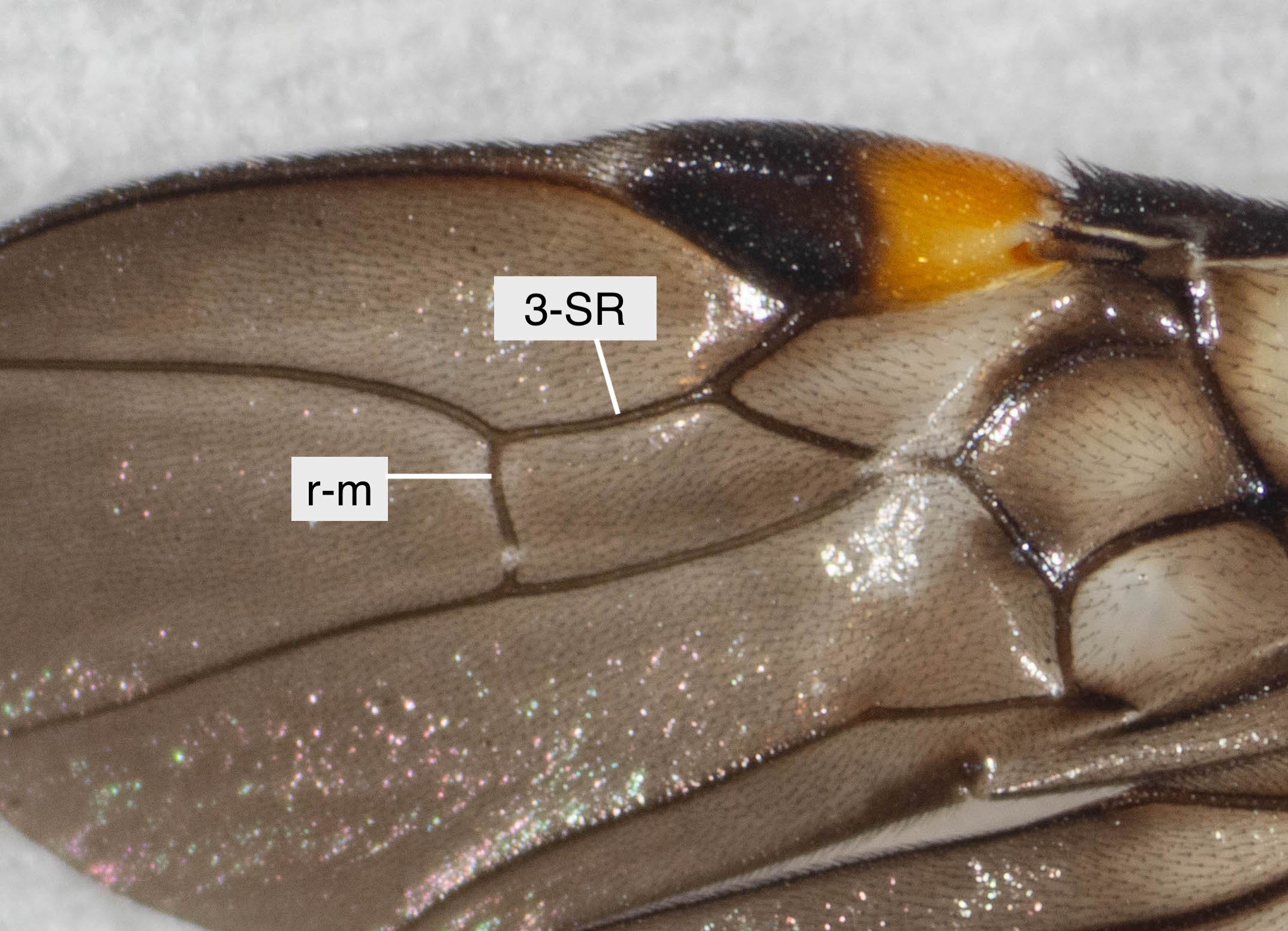Vipiellus (Braconidae: Braconinae)

Workbook
These small but eye-catching wasps were hovering about a sandy patch, landing occasionally and ovipositing into the soil. Several were visible at any one time, so there were probably a score or more. It was a hot, sunny day (30 degrees C), in the aftermath of unseasonably hot temperatures (38 degrees!) the day before.
All field photos in the gallery below were taken in the week starting 20th Sept 2023. During that time, I saw no males … every individual I photographed was a female.
Collected specimens
Having never noticed such a colourful braconid here before, I collected two for identification. I will probably lodge them with a museum or ANIC, someday. In the meantime, they provide me with a valuable reference en route to learning more about this group of wasps.
Both were chilled then killed, in preparation for detailed imaging and storage. Collection ID: 2309L (collected 20/9/23); 2309N (collected 25/9/23) - both were collected from the same location, while circling and ovipositing into coarse sand.
family: Braconidae
Venation confirms the family, distinguishing them from the related Ichneumonidae.
subfamily: Braconinae
The species fits the description for Braconinae, based on van Achterberg’s key to Australian subfamilies (in Naumann, 1991 p 947). See also the excellent, illustrated key to Braconidae subfamilies worldwide by the same author (van Achterberg, 1993).
But which genus?
Braconinae is a huge, cosmopolitan subfamily comprising more than 200 genera and thousands of species (Quicke & Ingram, 1993). Australia is home to more than 40 genera, including some which are endemic. Many species are quite large, and often display striking combinations of orange, black, yellow and white. As a result, they are commonly photographed or collected.
And, rightly or wrongly, the vast majority are attributed to the genus Callibracon. For example, a search for Australian Braconinae on iNaturalist yields 1100 sightings – with more than 900 suggested as Callibracon.
A quick browse in iNat and I find widespread sightings of wasps that look very like mine. For example: from South Australia; northern NSW; and Queensland. So is mine Callibracon? Or might it be one of the less commonly recognised genera?
So, with the two specimens in hand I’ve been working through the illustrated key to Australian genera, by Quicke & Ingram (1993) ….
Vipiellus
After much trial-and-error, I’m now convinced that these are a better match for Vipiellus than Callibracon. The shape of the ovipositor and the triangular area of the second tergite are the features of note. Interestingly, the two genera key out together until the penultimate step. That is: 1, 32, 39, 42, 43, 44, 45, 47, 48, option 1 … Vipiellus cf. 1, 32, 39, 42, 43, 44, 45, 47, 49, option 2 …. Callibracon.
A cautionary note
Steps 1 and 32 of the key are somewhat problematic. In both couplets, my wasps don’t match either option perfectly. Not really surprising … keys are not perfect tools. But on balance, I’m comfortable with the path followed. Vipiellus is apparently a difficult genus to place, as in some species the “characters (are) mildly developed” (Quicke et al. 2023, p. 20). Indeed, Vipiellus can be reached by taking either of the options at couplet 32 … so my difficulty in finding a perfect fit is perhaps understandable.
Vipiellus - published descriptions & images
Just a few extra shots
Known species of Vipiellus
There are currently just three recognised species of Vipiellus: V. australiensis; V. crenulatus; V. mjoebergi (see GBIF records). I note that AFD have these species listed under the genus Vipio (see AFD listing). However, Vipiellus is maintained as a distinct species in a very recent molecular phylogenetic publication (Quicke et al., 2023), so I assume it remains the currently accepted nomenclature.
Of the three species, V. australiensis seems the closest. The colour is a reasonable fit.
I discount V. crenulatus (Szépligeti, 1905) as the species has a black head, and it is unlikely to be V. mjoebergi (Roman, 1915), as that species is very small (~6mm). It could, of course, be an undescribed species … !
References
Austin, A.D., Quicke, D.L.J. & Marsh, P.M. 1994. The hymenopterous parasitoids of eucalypt longicorn beetles, Phoracantha spp. (Coleoptera: Cerambycidae) in Australia. Bulletin of Entomological Research, 84: 145-174
Naumann, I. D. 1991. Hymenoptera. Ch. 42 in Insects of Australia, Second Edition. CSIRO. pp 916-1000
Parrott, A.W. 1953. A systematic catalogue of Australian Braconidae. Pacific Science, 7(2): 193-218
Quicke, D.L.J. 1987. The Old World genera of braconine wasps (Hymenoptera: Braconidae). Journal of Natural History, 21(1): 43-157
Quicke, D.L.J. & Ingram, S.N. 1993. Braconine wasps of Australia. Memoirs of the Queensland Museum, 33(1): 299-336 (link to paper on Biodiversity Heritage Library)
Quicke, D.L.J., Jasso-Martínez, J.M., Ranjith, A.P., Sharkey, M.J., Manjunath, R., Suresh, N., Hebert, P.D.N., Priyadarsanan, D.R., Thurman, J. & Butcher, B.A. 2023. Phylogeny of the Braconinae (Hymenoptera: Braconidae): a new tribal order! Systematic Entomology, 2023: 1-26
van Achterberg, C. 1988. Revision of the subfamily Blacinae Foerster (Hymenoptera, Braconidae). Zoologische Verhandelingen, 249 (1): 1-324
van Achterberg, C. 1993. Illustrated key to the subfamilies of the Braconidae (Hymenoptera: Ichneumonoidea). Zoologische Verhandeligen, 283: 1-189 link via Research Gate
For reference … the wing terminology used by Quicke & Ingram (1993) follows that of van Achterberg. Below are the relevant reference figures.
Figs. 15-16 from van Achterberg (1988), p. 10.
Figure legends for Figs. 15-16 from van Achterberg (1988), p. 10.
Fig. 36 from van Achterberg (1988), p. 182.
Note that this is a Blacinae wasp, a different subfamily of Braconidae. However, it shows the location of r-m which is relevant for using the Quicke & Ingram key.
This is a workbook page … a part of our website where we record the observations and references used in making species identifications. The notes will not necessarily be complete. They are a record for our own use, but we are happy to share this information with others.
























































